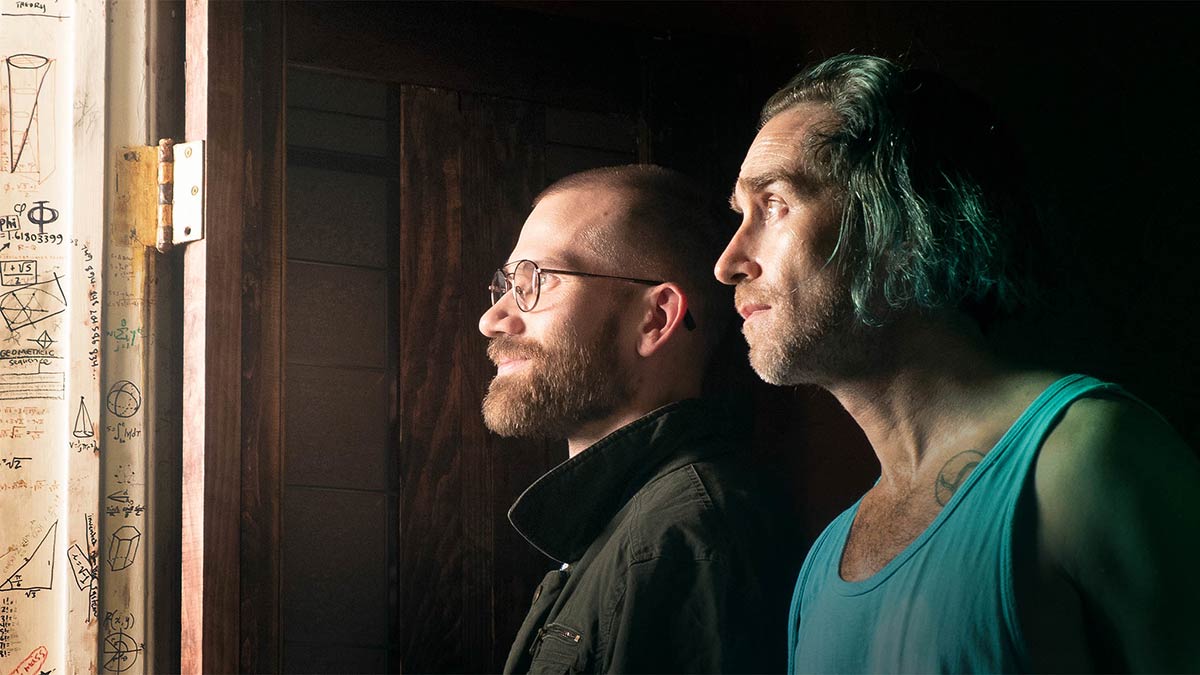Justin Benson and Aaron Moorhead work in such a specific, sui generis key and style, producing such exciting results on a small scale, that it’s genuinely shocking they haven’t been swooped up by the Tentpole Industrial Complex and asked to feed their gifts into the content machine. The conglomerates’ loss is our gain; their latest fusion of science fiction, character drama, dark comedy, and overwhelming paranoia, “Something in the Dirt,” feels like their most personal film – and not just because they wear so many hats, directing and writing and producing and editing and starring. It’s something of a homemade effort, after the bigger canvas and movie-star leads of “SYNCHRONIC” (the film ends with a dedication “to making movies with your friends”), and it feels like it – in the best possible way.
READ MORE: Sundance 2022 Preview: 20 Must-See Movies From The Festival
Benson and Moorhead set their story in a contemporary L.A. that feels post-apocalyptic without any real exaggeration: choppers are constantly flying over, distant smoke fills the sky, and when Levi (Moorhead) first meets neighbor John (Benson), several minutes pass before either man acknowledges the large bloodstain on his shirt. “L.A. is just like Halloween… just like, all of the time,” John shrugs. They’re neighbors in a downscale apartment building; Levi has just moved into a unit that’s been abandoned for as long as John remembers, and John has been there for over a decade.
Bad vibes aside, this feels like a fairly standard introduction – until the proceedings are interrupted by a documentary-style talking head interview with one Dr. Rita Miller, a chemist and expert who darkly hints at the journey we’re about to take. “I don’t think anything is worth what happened,” she says, grimly. “It’s really sad. I don’t just mean the dead one.” And then zap, just like that, we’re back to the story. But this hiccup in time and style hangs a long, dark shadow over everything that follows.
Levi and John quickly discover why the apartment has been empty for so long: it’s inhabited by strange sounds and reflections of light, and on his first visit, John thinks he sees a ghost. Levi is skeptical at first (“Yeah, uh, absolutely, no doubt”), but then he sees it too. And so they decide, because it’s L.A., to make a film out of it. “How much do you think, like, Netflix pays for one of these?” John muses.
The pair’s script makes the wise decision to paint both of these characters as, in different but equally amusing ways, genuine doofuses. They live on the fringes, drifting from place to place and job to job without making real connections, but they’re very particular kinds of guys, who grew up on “X-Files” and listen to a lot of podcasts and read a lot of Reddit and quote TED Talks. Levi takes “energy supplements” he buys on the internet; John has a copy of “Atlas Shrugged” conspicuously placed on his bookshelf. Their collective consciousness is a soup of conspiracy theories, which gives way, without much work, to wild ideas about numerology, symbology, mass simulations, and mind control.
The deeper they dig, of course, the bigger it all gets (“We’re on to something,” they keep assuring each other, breathlessly), their theories, conclusions, and explanations going further afield. “What’s crazier,” John asks, “believing every single coincidence you see – or just ignoring them all?” And one of the neatest tricks of their script and direction is the equal balance struck between John and Levi’s genuinely unnerving journeys down rabbit holes and the silliness of their galaxy-brain thinking, with Benson and Moorhead finding the (gallows) humor in the pair’s rapidly increasing insanity. But the filmmakers don’t just ape the language of conspiracy theories and the guiding philosophies of decoding and “solving” wildly disparate clues (a la QAnon). They also capture the media mindset via a hyperlinking editorial style which frequently “clicks,” via crosscutting, to images and video related to John and Levi’s wild conversational tangents. Of course, no two people will go to the same extreme places at the same time, leaving the pair to inevitably turn on each other with the kind of cruelty that only people who really know each other can conjure up. And that’s where the filmmakers’ gift for character drama really comes through.
That early documentary insert, by the way, is no anomaly. More experts soon appear, and then the filmmakers themselves, in character (or are they?), and the blurring layers of narrative and reenactment begin to mesh with the ideas of fakery and simulation articulated by John and Levi. All in all, it’s a bit of a mindfuck – not surprising considering Benson and Moorhead’s filmography thus far, which has delved into cults, time travel, and the like (and emphasized the “science” half of science fiction) with equal doses of thoughtfulness and paranoia.
“Something in the Dirt” finds Benson and Moorhead working on a smaller scale than “The Endless” or “SYNCHRONIC.” The filmmakers themselves are among the film’s very few speaking roles, and most of the action is confined to a single apartment. This is presumably the result of the film’s production timeframe, and indeed, it feels very much like a pandemic movie, albeit not merely due to its casual mentions of lockdowns and to-go cocktails. Instead, what Benson and Moorhead’s perceptive script memorably gets at is the damage this period has done to so many people who suddenly found themselves with more time on their hands and space in their brains, coupled with ever-present access to the internet – and how, slowly and surely, they lost their damned minds. [A]
Follow along with all our coverage of the 2022 Sundance Film Festival.





